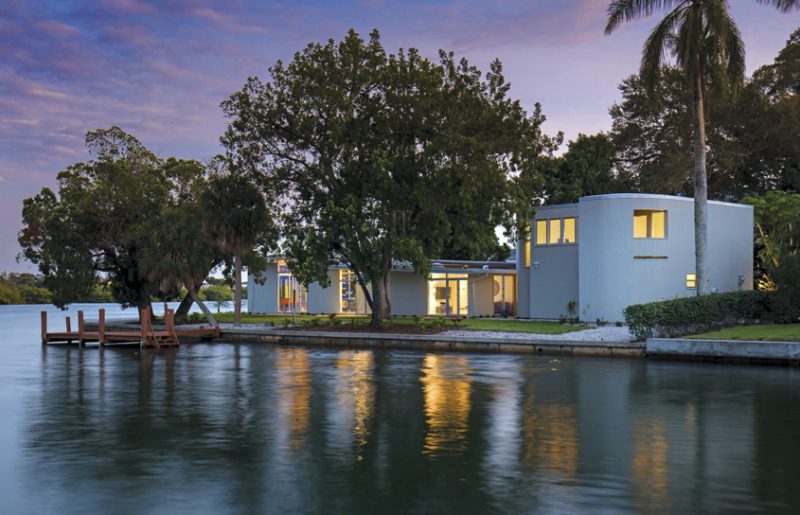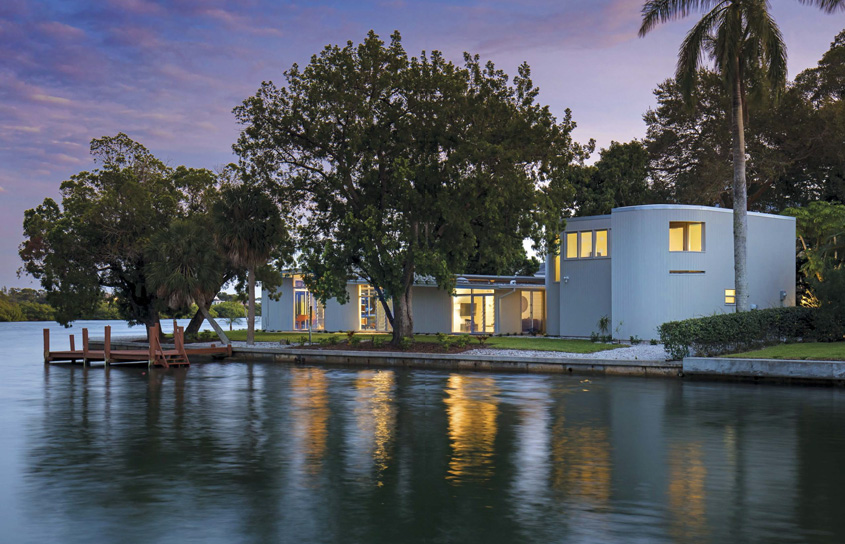
In the aftermath of the World Wars, drastic shifts occurred in the structures that architects designed and the manner in which those structures interacted with their environments. This guiding principle in Mid Century design is clearly observable in Sarasota, Florida, where a group of architects created new structures for a new world.
One of those architects is Carl Abbott— he’s considered a part of the Sarasota School, a term coined by architect Gene Leedy, and he studied under famed architect Paul Rudolph at Yale. From his perspective, the work in Sarasota is a melding of International style and an organic style. “That’s what the Sarasota School was all about,” says Abbott, “combining the two and making them work with their present environment.”
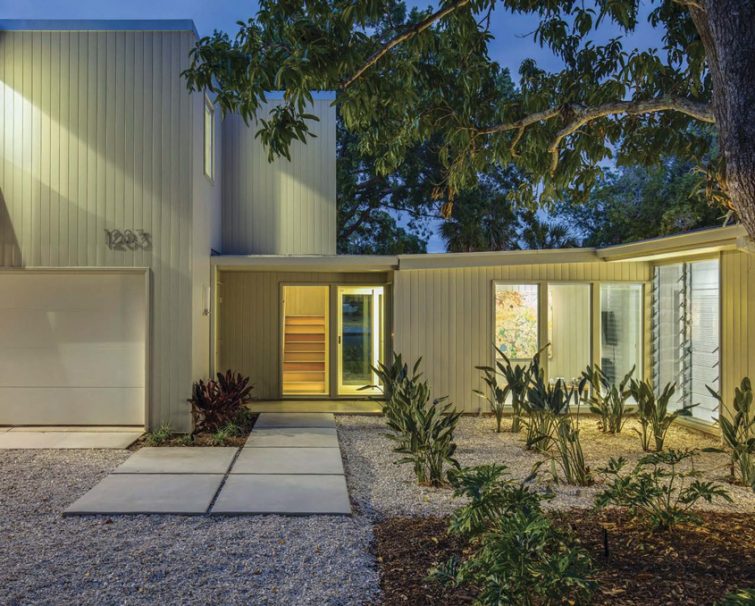
Climate Informed
The humidity that is intrinsic to Florida’s climate and the lack of air conditioning in the 1950s prompted the Sarasota School architects to design homes that were self-ventilated and blurred previously defined lines between inside and outside.
“I think they were really trying to address a lot of our local issues. How do you design a house for this climate?” says Sam Holladay, Firm Principal at Seibert Architects—a firm established by the Sarasota School’s Tim Seibert in 1955.
“The work was about the capture of light, the honest expression of structure and a clarity of concept.” —Michael Epstein
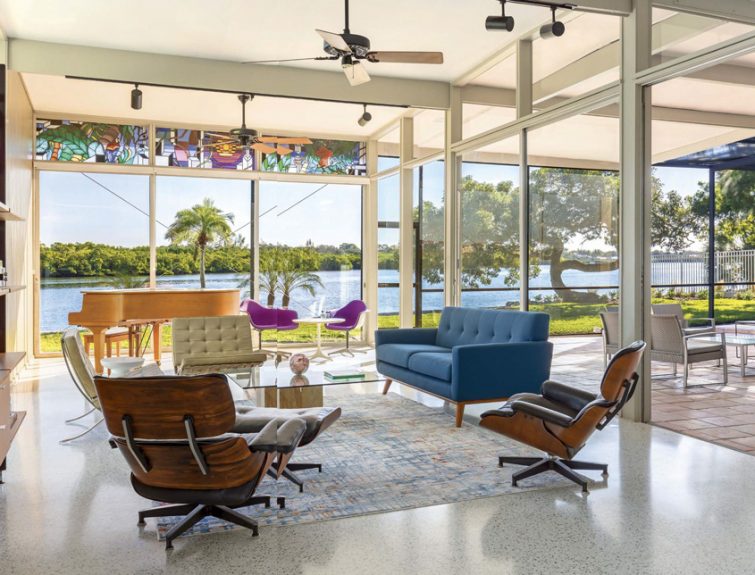
The resulting modern structures had open floor plans, entire walls of sliding glass and materials that houses had never been constructed with before. “There was an inventiveness with the use of materials that permeated a lot of the work,” says Michael Epstein, head designer at Seibert, also noting the exploration of new structural systems that interplayed with those materials. The result was both aesthetic and practical.
Honest Design
As architectural practices imitating past styles were cast off in favor of simpler and more minimalistic forms, new ideals were achieved. “The work was about the capture of light, the honest expression of structure and a clarity of concept,” says Epstein. “Nothing is hidden; nothing is concealed.” While similar work was happening elsewhere in the world, the tropical Florida landscape made the work in Sarasota unique.
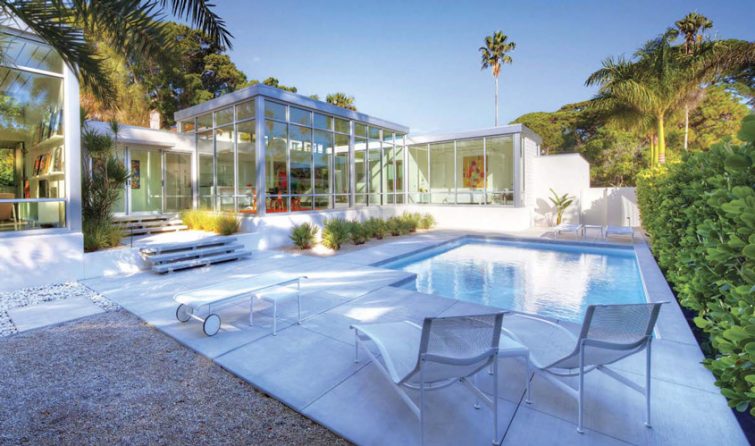
Well-known work includes Rudolph’s now partially restored Sarasota High School, one of the most famous buildings in the South according to Abbott, and also the Walker Guest House, a 576-square-foot beach bungalow designed by Rudolph in 1952.
With a unique panel system, it transformed from glass-walled pavilion to enclosed bungalow. “Everything was done in the most honest and direct way that one could do it [and] in a way that produced beautiful outcomes,” says Epstein.
Preserving Sarasota Mid Century Architecture
Many of the Mid Century homes in Sarasota sit on expensive waterfront property. Often new landowners see them as structures to tear down rather than to preserve, but the Sarasota Architectural Foundation promotes the protection and renovation of these structures.
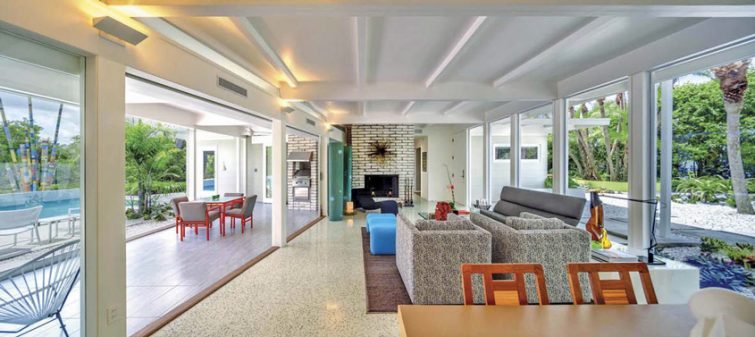
While the exact number of Mid Century structures in the town is unknown, the Sarasota Architectural Foundation estimates around 300 are still standing. “Some have been restored and are in pristine shape; others have been changed in minor ways; and others are still around but have been altered beyond recognition,” says chairman of the board, Christopher S. Wilson, Ph.D.
Check out this Sarasota before-and-after here, and of course, don’t forget to follow us on Instagram, Facebook and Pinterest for more Atomic Ranch articles and ideas!

